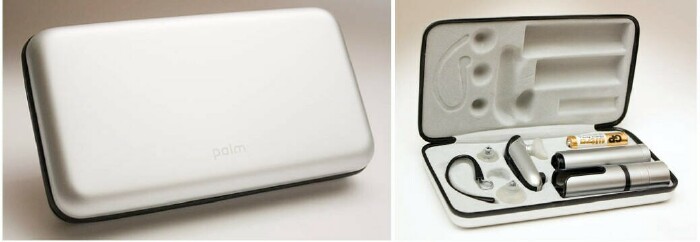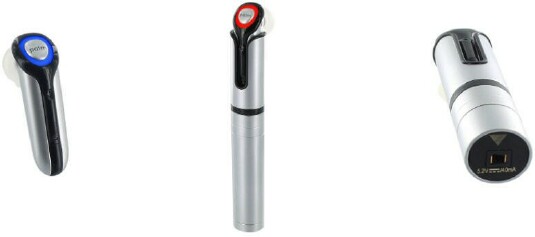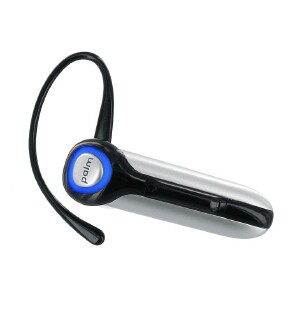User Opinions
|
||||||||||
|
|
|
| Thu Jan 31, 2008 - 9:39 AM EST - By Jay Gross | |
|
|
|
|
|||||||||||

Bluetooth or not, the two most important things about headsets are sound quality and pizzazz. Sound quality first, because no matter how suave you look with the thing perched on your head, you still have to be able to hear your callers. And be heard. Pizzazz takes care of itself. If the device looks enviably fine, then that�s that.
After those considerations are taken care of, headsets� �other� features stack up to make or break a purchase decision. Talk time, charging options, comfort, and ease of use. My favorite Bluetooth headsets visit all of those camps to some extent or other, and serve up a good mix of features, looks, and longevity. I don�t talk on the cell phone much, so the talk time per charge isn�t as important to me as the ease of use, but standby time is important to me. That�s how long the device will retain its charge while waiting for a call. So far, my favorite headsets for use at home are wired models, for example: Palm�s hybrid, because of their super simple user interfaces - meaning no Bluetooth pairing to hassle with.
Wandering the streets, as in strolling down the avenues, I prefer Bluetooth units, because they leave my hands free to fend off marauding SUV�s. I like it simple. I don�t want to have to memorize a manual to use the thing, and through all of it, wired or not, I want sound quality as well as sufficient quantity to be useful over the mind-splitting din we charitably call �urban.�
Palm�s Ultralight Wireless Bluetooth Headset impresses from the start. It comes in an attractive, felt-lined case that�s fitted with impressions of the kit�s parts. Here�s what you get in the case:

The reason for all the pieces/parts is to offer a choice of charging options. You can recharge from house current, using the smartphone�s power adapter, or with the AAA battery for on-the-go recharging. The latter is an important option, because the talk time on this model is rather low: three hours, according to the company�s literature.
A full charge takes three hours, although after the first time you can do a �minimal� recharge of an hour or so. I don�t know why you�d do that, unless your jet�s leaving for Paris and you�re not on it, and Auntie Em is desperately expecting a call. The problem with the partial charge scenario is you don�t have any way to know how much charge is left until it�s too late.
The whole kit fits together nicely to accomplish whatever charge option you need, and it maintains an admirable degree of �coolth� throughout, looking good even when stacked in a tower for charging. The �dock� that holds the headset doubles as a cozy carrier that clips to a shirt pocket. Nice. So, hook it over your pocket protector, dude!

Like all Bluetooth devices, Palm�s Ultralight has to be paired with your Treo or Centro before it will work. I found this process to be simple and reliable, and my Treo 700p, which has Palm�s much-maligned Maintenance Release applied, even remembered the pairing after more than a month.
I paired the headset with my Treo 700p and 680, and then with my Centro, and it worked seamlessly with all of the above. To put the headset into its pairing mode, hold down its button for a while, till the halo around the button glows alternatingly red and blue. Instigate the Treo�s or Centro�s pairing mode, too, Unfortunately, �seamlessly� refers to the ease of pairing, not the quality of the sound. With all of these devices, my tests showed a quality of sound that I rate mediocre at best. The best of the bunch was the Treo 680, followed by the 700p, and then the Centro. I tested incoming and outgoing sound, because with any headset you not only need to hear, but also be heard. I rate the sound quality as barely adequate in both directions as barely adequate. Outgoing seems to be a little lower quality than incoming.
The sound quality is okay. Just okay. Considering the glorious looks, the sweet case, and the well thought out design of this headset, I expected better. Much better.
For the techies out there, the Ultralight is Bluetooth 1.1. Dig through the product�s manual, and you�ll find out that it�s really a Plantronics unit that�s been rebranded. You can tell from the FCC (and other regulatory agencies�) licensing information in the back.
In the tradition of Bluetooth headsets, Palm�s Ultralight lets you answer or reject a call from the headset, without troubling you to drag out your smartphone. I rarely use this feature, but it�s welcome when I need it. I also appreciate the gentle beep the headst makes when a call comes in � in addition to the ringtone from the smartphone, of course. If you�re willing to memorize the manual (page 21), the device offers other features to entice you:
There is an enormous amount of competition in headsets, each manufacturer trying to outdo the other in pursuit of that elusive rainbow, market share. In the case of the Ultralight Blutooth Headset, Palm could have done with a little more emphasis on sound quality and talk time, although they�ve done a really great job on looks, packaging, and pizzazz.
|
|
||||||||||||||||||||
|
Copyright 1999-2016 TreoCentral. All rights reserved :
Terms of Use : Privacy Policy
TREO and TreoCentral are trademarks or registered trademarks of palm, Inc. in the United States and other countries;
the TreoCentral mark and domain name are used under license from palm, Inc.
The views expressed on this website are solely those of the proprietor, or
contributors to the site, and do not necessarily reflect the views of palm, Inc.
Read Merciful by Casey Adolfsson